with用法
概括:这道题是乔辗呕同学的课后英语练习题,主要是关于with用法,指导老师为水老师。
题目:with用法
解:With
1.和,跟
2.伴随着;带着;具有
3.由于,因
4.关于;对于;在...,由...看来,就...来说
5.和...一致;赞成
一、with表拥有某物
Mary married a man with a lot of money .
马莉嫁给了一个有着很多钱的男人.
I often dream of a big house with a nice garden .
我经常梦想有一个带花园的大房子.
The old man lived with a little dog on the lonely island .
这个老人和一条小狗住在荒岛上.
二、with表用某种工具或手段
I cut the apple with a sharp knife .
我用一把锋利的刀削平果.
Tom drew the picture with a pencil .
汤母用铅笔画画.
三、with表人与人之间的协同关系
make friends with sb
talk with sb
quarrel with sb
struggle with sb
fight with sb
play with sb
work with sb
cooperate with sb
I have been friends with Tom for ten years since we worked with each other ,and I have never quarreled with him .
自从我们一起工作以来,我和汤母已经是十年的朋友了,但我们从没有吵过架.
四、with 表原因或理由
John was in bed with high fever .
约翰因发烧卧床.
He jumped up with joy .
他因高兴跳起来.
Father is often excited with wine .
父亲常因白酒变的兴奋.
五、with 表“带来”,或“带有,具有”,在…身上,在…身边之意
The girl with golden hair looks beautiful .
那个金头发的女孩看起来漂亮.
The famous director will come to the meeting with the leading actor and actress .
那个有名的导演将带着男女主角来到会场.
A storm with a hurricane has come onto its way .
带有飓风的风暴要来了.
Do you have money with you .
身上带着钱吗?
Take the umbrella with you in case it rains .
随身带伞,以防下雨.
六、with表想法,信念,态度与…一致
I agree with you on how to deal with it .
关于此事如何处理,我同意你的看法.
I believe with the headmaster that a good teacher should not only teach a student what to learn but also how to learn it .
我相信校长所说,一个好老师不但教学生学什么,而且应教学生怎么去学.
七、with表示让步,“虽有,尽管”
With all his money and fame,he is not happy .
有着钱和名誉,他还是不快乐.
With good teachers and warmhearted classmates ,the new comer feels lonely .
虽有着好老师和热心的同学,这个新来的还是感觉孤独.
八、with表同时,或同一方向,“随着”
The temperature of cold-blooded animals change with the temperature of the surroundings .
冷血动物的体温随着周围的环境的改变而变化.
The big ship is sailing with the wind .
这个大船正随风向航行.
And with the last words ,she turned away.
随着最后一句话说完,他转身离开了.
九、with的复合结构表行为方式或伴随情况
1、 with + n/pron + adj
1.伴随状态(如上面的with表拥有某物,with 表原因或理由等),主要强调所处于的状态,一般在句中作状语,定语)eg:The girl with golden hair ;a man with a lot of money;
2.with有“和,与”的意思,for example:make friends with sb;play with sb;talk with sb,agree with sb等
3with有表示方式的用法:eg:write with pen;cut with knife等
4.with最常用的句式:with+宾语+宾补(宾补可用形容词,动词ing形式,不定式to do 形式,介词短语等等)
5.with表示让步,“虽有,尽管”eg:
With all his money and fame,he is not happy .
有着钱和名誉,他还是不快乐.(这个不常用)
举一反三
例1: 介词(to,at,for,with)的用法?[英语练习题]
思路提示:
To 1.向;至;往:She's going to London.她要去伦敦.Turn to the left.向左转.Pisa is to the west of Florence. 比萨在佛罗伦萨的西面. He has gone to school.他上学去了. 2.(用于表示一系列事物或一段时间的尽头或限度) 直到:from Monday to Friday从星期一到星期五 from beginning to end 从开始到结束. 3.用于表示接受者:Give that to me.把那个给我.I am very grateful to my parents.我很感激我的父母.What have you done to your hair?你把头发怎么搞的?Sorry I diddn't realize you were talking to me.对不起,我不知道你是在跟我说话. 4接触到;针对:He put his hands to his ears.他将两手捂住耳朵.They sat back to back.他们背对背坐着.She made no reference to her personal problems.他没有提及自己的个人问题. 5.达到某种状态:The meat was cooked to perfection.这肉煮得恰到好处.His speech reduced her to tears(=make her cry).他的话令她流泪. 6.(用于引出比较中的另
例2: with和by的介词用法sheisgoingtobuyanewcar()Awithmoneybthemomeycwiththemoneydbythemomey[英语练习题]
思路提示:
C
by是指方式,方法,还可用于被动语态,by sb,
例句,This composition is written by me.
You can learn English by listening to the tape.
with中文是“和”,表示有,附带着,伴随with sb/sth
例句,I am in love with you.I can kill you with this gun.
是的,都可表示方式,区别上来说不大,我觉得主要找语感,读起来顺不顺.例如:The table is covered with/by a piece of cloth.就都可用,
作为介词,with常指跟,和一起
by还有经过,靠近,在一旁,有时有通过,由的意思
还可用于时间,表示到.之前,
我觉得还有一个较常用的意思,就是根据,按照
例3: 介词on,by,in,with的用法区别[英语练习题]
思路提示:
by
prep.
1. 被,由
The homework was assigned by the teacher.
这些家庭作业是老师布置的.
2. 靠,用,通过
They crossed the river by ferry.
他们乘渡船过了河.
3. 经由;沿
Ellen flew to Chicago by way of Minneapolis.
艾伦经由明尼阿波利斯飞往芝加哥.
4. 在...旁边,靠近;在...手边
I haven't got any money by me.
我身边没有带钱.
5. 不迟于;在...之前
We had to get there by evening.
我们必须在夜晚前抵达那里.
6. 根据,按照
How do you know he didn't act by the rules?
你怎么知道他没有按规定行事?
7. (表程度)相差
He missed the bus by three minutes.
他晚了三分钟没赶上那班公车.
8. 凭,对...(发誓)
I swear by God!
我对上帝发誓!
9. (乘除法上)以...,用...(乘或除)
Nine divided by three makes three.
九除以三得三.
10. 以...计,按
You'll be paid by the hour.
你的工资将按时计酬.
11. 在...的时候
He had to sleep by day and work by night.
他只好白天睡觉,晚上工作.
12. 就...来说,关于
Philip is a doctor by profession.
菲利浦的职业是医生.
13. (表连续或反复)逐个;逐批
The teacher explained the text sentence by sentence.
教师逐句讲解了这篇课文.
14. 由于
She took my umbrella by mistake.
她误拿了我的伞.
with
prep.
1. 与...一起,偕同,和...
She lives with her son.
她和儿子住在一起.
2. 带着...;有...的
The girl with long hair is my classmate.
长头发的女孩是我同学.
3. 以(手段、材料),用(工具)
My American friend is learning to eat with chopsticks.
我的一位美国朋友在学着用筷子吃饭.
4. 符合,一致
5. 在...一边,赞成
We are with you there.
在那一点上我们站在你这一边.
6. 跟...,反对
The Allied Forces fought with Germany.
盟军跟德国交战.
7. 顺...方向,跟...一起
8. 加上,包括...在内
His bank savings, with his wife's jewels, amount to three million dollars.
他的银行存款加上他太太的首饰合计达三百万元.
9. 随着,对应
An independent man, Peter never goes with the tide.
彼得是个有主见的人,从不随大流.
10. 在...身边,在...身上
He had a gun with him.
他带了枪.
I have no money with me.
我身边没有钱.
11. 与...(相比)
12. 跟...(分手)
I parted with my brother in Paris.
我跟我兄弟在巴黎分手.
13. 尽管有
With all the setbacks, he did not lose heart.
尽管遭受种种挫折,他没有丧失信心.
14. 由于,因为
They were wild with joy.
他们欣喜若狂.
15. (与副词连用构成祈使句,表示强烈的愿望)
Down with fascism!
打倒法西斯主义!
in
prep.
1. 在...里,在...上
The two brothers study in the same class.
两兄弟在同一个班里上课.
The telephone is in the little study on the ground floor.
电话在一楼的小书房内.
2. 在...之内;在...方面
He is lacking in courage.
他缺乏勇气.
3. 从事于;参加着
She is in business.
她做生意.
4. 穿着,戴着
He is dressed in black.
他穿黑衣服.
5. 朝,向
She hurried away in the opposite direction.
她朝相反的方向匆匆离去.
6. (表示手段、方法、材料)用,以
They paid in cash.
他们用现金支付.
7. 在...期间;在...以后
He'll come back in a week.
他将于一周之后回来.
I haven't met her in a long time.
我好长时间没有遇见她了.
8. 处在...中
The room was in disorder.
房间里乱七八糟.
9. (表示数量、程度、比例)按,以;在...中
One child in twenty has this disease.
二十个小孩中有一个患有这种疾病.
10. 在...身上,在...上
In him I see a future leader.
我在他身上看到了一个未来的领袖人物.
11. (表示过程)在...当儿;在...过程中
The work is in progress.
这工作正在进行中.
12. (表示动作的方向和结果)进入到...中;成,为
He pushed a button and set the machine in motion.
他按下按钮开动了机器.
on
prep.
1. 在...上
He laid a hand on my shoulder.
他把一只手放在我肩上.
2. 以...支持,挂在...上;以...为轴
There is a picture on the wall.
墙上有一幅画.
3. 朝,向
4. 靠近,在...旁,沿着
She stood on my left.
她站在我左边.
5. 在...的时候,在...后立即
He jumped with joy on hearing the news.
他一听到这个消息就高兴得跳了起来.
6. 关于,有关
The teacher made comments on our compositions.
老师就我们的作文作了讲评.
7. 以...方式,通过
Did you hear it on the radio?
你是从收音机听到这消息的吗?
8. 凭...,靠...;使用...,吃...
They said they were acting on instructions.
他们说他们是奉命行事.
9. 处于...状态,进行中
10. 属于...,参加...,是...的成员
He is on the school volleyball team.
他是校排球队队员.
11. 加之于,重叠于
12. 由...支付
Have another coffee on me.
再来一杯咖啡,我请客.
13. 带在...身上
例4: 介词with、for、on的用法1.Whattimewouldyoulikeyourtable?2.Whatvegetableswouldyoulikewithyourdinner?3.Whatwouldyouliketohaveforyourlunch?4.Whatwouldyoulikeforyourmaindish?5.Whatwouldyouliketodoonyourbirthday?[英语练习题]
思路提示:
一、on 的用法
1.关于、基础、靠、著论
Theory must be based on practice.
理论必须以实践为基础.
The people in the south live on rice.
南方人主食大米.
2.着、罢、出售、偷、公、假,故意、支付,相反、准
3.步行、驴、马、玩笑on,cab 和 carriage用in
on foot步行 on horse骑马 on donkey 骑驴
He rode on blood flowing from his side.
他骑着马,鲜血从腰部流下来
二、with的用法
1.伴随状态(如上面的with表拥有某物,with 表原因或理由等),主要强调所处于的状态,一般在句中作状语,定语)eg:The girl with golden hair ;a man with a lot of money;
2.with有“和,与”的意思,for example:make friends with sb;play with sb;talk with sb,agree with sb等
3with有表示方式的用法:eg:write with pen;cut with knife等
4.with最常用的句式:with+宾语+宾补(宾补可用形容词,动词ing形式,不定式to do 形式,介词短语等等)
5.with表示让步,“虽有,尽管”
例5: 【towithfor等介词的用法】[英语练习题]
思路提示:
百科名片
介词是一种用来表示词与词、词与句之间的关系的虚词,在句中不能单独作句子成分.介词后面一般有名词代词或相当于名词的其他词类,短语或从句作它的宾语.介词和它的宾语构成介词词组,在句中作状语,表语,补语或介词宾语.介词可以分为时间介词、地点介词、方式介词、原因介词和其他介词,
目录
一、概念:
二.相关知识点精讲
1.表示地点位置的介词
2.表示时间的介词
3.表示运动方向的介词:
4.表示“在……之间”的介词:
5.表示其他意义的介词
其它常用介词
介词英文缩写:
介词用法口诀
一、概念:
二.相关知识点精讲
1.表示地点位置的介词
2.表示时间的介词
3.表示运动方向的介词:
4.表示“在……之间”的介词:
5.表示其他意义的介词
其它常用介词
* 介词英文缩写:
* 介词用法口诀
编辑本段一、概念:
介词(是prepositions,简称prep),又称前置词,是英语中最活跃的词类之一,连接主语和表语.特别是一些常用介词的搭配力特别强,可以用来表示各种不同的意思.英语里大部分习语都是由介词和其他词构成的.介词在句中一般不重读.在定语从句“介词+who/which”的结构中,不能用that 代替who/which.She is a good student from who we should learn.
编辑本段二.相关知识点精讲
介词口诀:自从以当为按照,由于对于为了到;和跟把比在关于,除了同对向往朝;用在名词代词前,修饰名代要记牢..
编辑本段1.表示地点位置的介词
1)at ,in, on, to
at (1)表示在小地方; (2)表示“在……附近,旁边”
in (1)表示 在大地方; (2)表示“在…范围之内”.
on 表示毗邻,接壤,“在……上面”.
to 表示在……范围外,不强调是否接壤;或“到……”
2)above, over, on 在……上
above 指在……上方,不强调是否垂直,与 below相对;
over指垂直的上方,与under相对,但over与物体有一定的空间,不直接接触.
on表示某物体上面并与之接触.
The bird is flying above my head.
There is a bridge over the river.
He put his watch on the desk.
3)below, under 在……下面
under表示在…正下方
below表示在……下,不一定在正下方
There is a cat under the table.
Please write your name below the line.
4)in front [frant]of, in the front of在……前面
in front of…意思是“在……前面”,指甲物在乙物之前,两者互不包括;其反义词是behind(在……的后面).
There are some flowers in front of the house.(房子前面有些花卉.)
in the front of 意思是“在…..的前部”,即甲物在乙物的内部.反义词是at the back of…(在……范围内的后部).
There is a blackboard in the front of our classroom.
我们的教室前边有一块黑板.
Our teacher stands in the front of the classroom.
我们的老师站在教室前.(老师在教室里)
5)beside,behind
beside 表示在……旁边
behind 表示在……后面
编辑本段2.表示时间的介词
1)in , on,at 在……时
in表示较长时间,如世纪、朝代、时代、年、季节、月及一般(非特指)的早、中、晚等.
如 in the 20th century, in the 1950s, in 1989, in summer, in January, in the morning, in one’s life , in one’s thirties等.
on表示具体某一天及其早、中、晚.
如on May 1st, on Monday, on New Year’s Day, on a cold night in January, on a fine morning, on Sunday afternoon等.
at表示某一时刻或较短暂的时间,或泛指圣诞节,复活节等.
如at 3:20, at this time of year, at the beginning of, at the end of …, at the age of …, at Christmas, at night, at noon, at this moment等.
注意:在last, next, this, that, some, every 等词之前一律不用介词.如:We meet every day.
2)in, after 在……之后
“in +段时间”表示将来的一段时间以后;
“after+段时间”表示过去的一段时间以后;
“after+将来的时间点”表示将来的某一时刻以后.
3)from, since 自从……
from仅说明什么时候开始,不说明某动作或情况持续多久;
since表示某动作或情况持续至说话时刻,通常与完成时连用.since表示"自(某具体时间)以来",常用作完成时态谓语的时间状语.
since liberation(1980)自从解放(1980年)以来 They have been close friends since childhood.
他们从小就是好朋友. (1)since the war是指"自从战争结束以来",若指"自从战争开始以来",须说"since the beginning of the war".
(2)不要将since与after混淆.
比较:He has worked here since 1965.(指一段时间,强调时间段)自从1965年以来,他一直在这儿工作.
He began to work here after 1965.
(指一点时间,强调时间点)从1965年以后,他开始在这儿工作.
4)after, behind 在……之后
after主要用于表示时间;
behind主要用于表示位置.
时间名词前介词用法口诀
年前周前要用in
具体日子要用on
遇到几号也用on
上午下午得是in
要说某日上下午
用on换in记清楚
午夜黄昏用at
黎明用它也不错
at用在时分前
说“差”可要用上to
说"过''要用past
编辑本段3.表示运动方向的介词:
across, through 通过,穿过
across表示横过,即从物体表面通过,与on有关,为二维
through穿过,即从物体内部穿过,与in有关,为三维.
along down from 也都是 方位介词
编辑本段4.表示“在……之间”的介词:
表示“在……之间”的介词在英语中属于方位介词,如in front of ,behind ,on, in, near, under, up
between, among
between指在两个人或两个事物之间;
among指在三个或三个以上的人或事物之间.
编辑本段5.表示其他意义的介词
1)on ,about 关于
on 表示这本书,这篇文章或演说是严肃的,或学术性的,可供专门研究这一问题的人阅读;
about表示内容较为普通,不那么正式.
2)by, with, in 表示方法、手段、工具
by 以……方法、手段或泛指某种交通工具;
with 表示用 …工具、手段,一般接具体的工具和手段;
in 表示用…方式,用…语言(语调、笔墨、颜色)等;
3)except, besides 除了
except 除……之外,不包括在内;
besides 除……之外,包括在内.
Except for Mr. Wang, we went to see the film.(王先生没去)
Besides Mr. Wang, we also went to see the film.(王先生也去了)
编辑本段其它常用介词
介词在英语词汇中所占比例很小,但它们的用法却非常灵活,复杂.下列为常用介词及含义:
1)about 关于,附近,大约,周围,随身.
I have bought a book about Shakespearean.
我买了一本有关莎士比亚的书.
There are about fifteen trees in the picture.
大约有十五棵树在图片里.
2)above 在.上,高出,以上,超过,在...上游.
The plane is flying above the clouds.
飞机在云上飞行.
I think the man is above sixty years old.
我想那人有六十多岁了.
3)across 横过,对面,交叉,在...的对面.
Can you swim across the river?
你能游过河吗?
We live across the street.
我们住在街的对面.
4)after 在...后面,依照.
He went home after school.
他放学后就回家了.
Read after me, please.
请跟我朗读.
5)against 撞到,靠着,反对,违背,
The car hit against the tree.
汽车撞了树.
He is standing against the wall.
他靠墙站着.
6)along 沿着,顺着.
They are walking along the river.
他们沿着河行走.
7)among 在...当中.(三者或三者以上)
He is the tallest among them.
他是他们当中个子最高的.
8)around 在...的周围,在...那一边.
They sat around the table talking the news.
他们绕桌而坐谈论新闻.
There is a drugstore around the corner.
拐角处有一家药店.
9)as 作为.
He doesn't like people treat him as a child.
他不喜欢人们把他当小孩子对待.
10)at 在...时刻,在...点钟,在...岁时, 向,在...之中,按...速度,值(卖)...钱, 在...(强调地点)
He always gets up at six in the morning.
他时常早上六点钟起床.
He shot at the bird but missed it.
他向鸟射击,但是没射中.
The car goes at eighty miles an hour.
汽车以每小时八十公里的速度行驶.
11)before 在...的前面(位置),在...之前(时间)
He took a picture before the car.
他在汽车前照了张照片.
He can't finish his work before supper.
晚饭前他完不成工作.
12)behind 在...的后面(位置), 落后于,不如,
迟于,晚于(时间)
Are there any brooms behind the door.
门后有扫帚吗?
All of us are behind him in mathematics.
我们数学都不如他.
13)below 在...之下,低于,
There are four lights below the ceiling.
天花板下面有四盏灯.
The murderer run away below the police's eyes.
杀人犯从警察眼皮底下跑了.
14)beside 在...的旁边,在...之外,与...相比.
He found the body beside the river.
他在河边发现了尸体.
Beside yours, my computer is too slow.
与你的计算机速度相比,我的就慢多了.
15)besides 除...之外, 还有...
We are all here besides Bowe.
除鲍外,我们也都来了.
16)between 在...两者之间,
The relations between the two countries has improved since then.
两国的关系从那以后得到了改善.
17)beyond 在...那边,
The shop you are looking for is beyond the street, you can't miss it.
你要找的商店在街的那边,你不会找不到的.
18)but 除去.
He has nothing but money.
他除钱以外什么都没有.
19)by 被..., 在...的近旁 , 在...之前, 不迟于, 以...为手段.
The classroom was cleaned by the students.
教室由学生们打扫干净了.
Miss Lucy came to China by air.
露西小姐是乘飞机来中国的.
20)down 沿着...望下.
She walked down the street.
她沿着街道走.
21)during 在...期间,在...时候.
During the holiday, we went to the south.
我们假期去了南方.
22)except 除...之外.
He knows nothing except English.
他除英语以外什么都不知道.
23)for 为..., 因为..., 至于... .
He works for this company.
他为这家公司工作.
She came back to the classroom for she had left her books in the classroom.
她返回到教室是因为把书留在了那里.
24)from 从..., 来自..., 因为.
Where are you from?
你是哪里人?
He died from an accident.
他死于一场事故.
25)in 在..., 在...之内,从事于..., 按照..., 穿着.
He was born in 1992.
他生于1992年.
I could finish the program in two weeks.
我可以用两周时间完成这个项目.
He spend less time in reading.
他读书时间很少.
The man in black jacket is our teacher.
穿黑夹克的那个人是我们的老师.
26)like 象...,如同.
The twins are like their father.
双胞胎像他们的父亲.
27)near 靠近.
There are some flowers near the house.
房子附近有一些花.
28)of ...的,属于.
This is a map of China.
这是一张中国地图.
29)off 离开...,在...之外.
The young man got off the train quickly.
那个年青人很快下了火车.
I live in a village a little way off the main road.
我住在离大路不远的一个村庄里.
30)on 在...之上.
My book is on the table.
我的书在桌子上.
31)out of 从...出来,在...之外.
The dog run out of the house.
狗从房子里跑出来.
32)outside ... 外边.
They are waiting outside the gate.
他们在门外等着.
33)over 在...之上,遍于...之上,越过.
There is a light over the desk.
桌子上方有盏灯.
He is over sixty years old.
他有六十多岁.
34)past 越过...,过...,超越.
The students walked past the post office.
学生们走过了邮局.
It is ten past two.
现在是两点十分.
35)round 围着...,绕过...,在...周围.
We sat round the table.
我们围着桌子坐下.
The earth goes round the sun.
地球绕着太阳转.
36)since 自... 以后,自...以来.
He has made great progress in English since he came into the college.
从他来到大学后,他的英语有了很大进步.
37)through 经过...,穿过.(立体层面)
They went through the forest.
他们穿过了森林.
38)throughout 遍及...,在各处.
The police searched for the criminal throughout the mountain.
警察搜山寻找犯人.
39)till 直到...,在...以前.
He didn't come back till eleven o'clock.
他直到十一点钟才回来.
We'll be home till six.
六点以前我们都会在家.
40)to 到...,向...,趋于.
How long is it from here to the station?
从这儿到车站有多远?
41)under 在...之下,低于.
There are some footballs under the bed.
床底下有几颗足球.
These students are under seventeen years old.
这些学生们不到十七岁.
42)until 直到,在...以前,
Please wait for us until we come back.
请等着我们回来.
It was not until last week that I handed in mathematics paper.
直到上周,我才交了数学论文.
43)up 在...上面,在...上.
He went up the stairs.
他上了楼梯.
44)upon 在...之上,迫近.
It's not polite
相关思考练习题:
题1:by和with的用法,区别
点拨:一、表示使用有形的工具时,通常用with来表示。例如: 用钢笔写 write with a pen 用肉眼看 see with naked eyes 用锤子敲打 strike with a hammer 用秒表计量 measure with a stop watch 用空气冷却 cool with air 用毛巾擦 rub with towel 二...
题2:with和and的区别是什么,怎么用
点拨:区别: 1、词性不同。with 是介词,而and是连词。 2、在句子中的作用不同。 AND连接的词属于并列成分,A and B中,A B是平行的而WITH和后面的词构成“介词+宾语”的结构A with B中,A B是不平行的,A是主要成分,with B则是个附属成分。 3、含义不同。w...
题3:with用法
点拨:With是个介词,基本的意思是“用”,但它也可以协助构成一个极为多采多姿的句型,在句子中起两种作用;副词与形容词。 With是一个十分有用的介词,其用法也比较复杂,以下用法值得注意: 1. 表示方式、手段或工具等时(=以,用),注意不要受汉语意思...
题4:js中with的用法
点拨:with 语句用于设置代码在特定对象中的作用域。 它的语法: with (expression) statement例如: var sMessage = "hello"; with(sMessage) { alert(toUpperCase()); //输出 "HELLO" } 在这个例子中,with 语句用于字符串,所以在调用 toUpperCase(...
题5:SQL 中with的用法
点拨:with a as (select * from test) select * from a; 其实就是把一大堆重复用到的SQL语句放在with as 里面,取一个别名,后面的查询就可以用它
热门曲谱
 刘德华喊话四大天王合体做节目:他们愿意我 彭于晏带违规水果过海关被罚 据台湾媒体报道,彭于晏7月1日返回台北在松山机场过海关的时候,因为不小心带了水果,被海关查获并罚款3000元台币 。有台湾媒体询问机场工作人...[详情]分类:知识库时间:12:37
刘德华喊话四大天王合体做节目:他们愿意我 彭于晏带违规水果过海关被罚 据台湾媒体报道,彭于晏7月1日返回台北在松山机场过海关的时候,因为不小心带了水果,被海关查获并罚款3000元台币 。有台湾媒体询问机场工作人...[详情]分类:知识库时间:12:37 led和节能灯哪个好
led和节能灯哪个好 概括:这道题是贲友颗同学的课后练习题,主要是关于led和节能灯哪个好,指导老师为黎老师。LED节能灯是继紧凑型荧光灯(即普通节能灯...
[详情]分类:知识库时间:14:47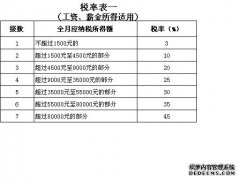 个人所得税税率
个人所得税税率 概括:这道题是蒲值暇同学的课后练习题,主要是关于个人所得税税率,指导老师为阚老师。
题目:个人所得税税率
解:<...[详情]分类:知识库时间:14:51 个税计算方法
个税计算方法 概括:这道题是文缘卣同学的课后练习题,主要是关于个税计算方法,指导老师为惠老师。负所得税制度的意义财税部门出台了给予弱势群...
[详情]分类:知识库时间:14:51 李光洁宣布结婚 彭于晏带违规水果过海关被罚 据台湾媒体报道,彭于晏7月1日返回台北在松山机场过海关的时候,因为不小心带了水果,被海关查获并罚款3000元台币 。有台湾媒体询问机场工作人...[详情]分类:知识库时间:12:37
李光洁宣布结婚 彭于晏带违规水果过海关被罚 据台湾媒体报道,彭于晏7月1日返回台北在松山机场过海关的时候,因为不小心带了水果,被海关查获并罚款3000元台币 。有台湾媒体询问机场工作人...[详情]分类:知识库时间:12:37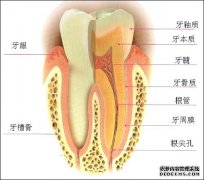 什么可以美白牙齿
什么可以美白牙齿 概括:这道题是贡泼俊同学的课后练习题,主要是关于什么可以美白牙齿,指导老师为井老师。冷光美白牙齿顾名思义就是用冷光来美白牙...
[详情]分类:知识库时间:14:58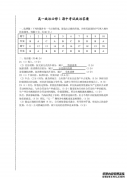 什么是连带责任
什么是连带责任 概括:这道题是满澄檬同学的课后政治练习题,主要是关于什么是连带责任,指导老师为宦老师。
题目:什么是连带责任
...[详情]分类:知识库时间:14:58 趣头条与江苏卫视达成战略合作 彭于晏带违规水果过海关被罚 据台湾媒体报道,彭于晏7月1日返回台北在松山机场过海关的时候,因为不小心带了水果,被海关查获并罚款3000元台币 。有台湾媒体询问机场工作人...[详情]分类:知识库时间:12:37
趣头条与江苏卫视达成战略合作 彭于晏带违规水果过海关被罚 据台湾媒体报道,彭于晏7月1日返回台北在松山机场过海关的时候,因为不小心带了水果,被海关查获并罚款3000元台币 。有台湾媒体询问机场工作人...[详情]分类:知识库时间:12:37 利率怎么算
利率怎么算 概括:这道题是从纲凑同学的课后练习题,主要是关于利率怎么算,指导老师为殳老师。银行利率表示一定时期内利息量与本金的比率,通...
[详情]分类:知识库时间:14:58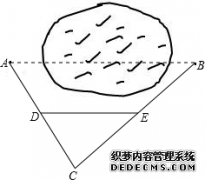 名贵树种
名贵树种 概括:这道题是山翁灿同学的课后练习题,主要是关于名贵树种,指导老师为谈老师。
题目:名贵树种
解: ...[详情]分类:知识库时间:14:56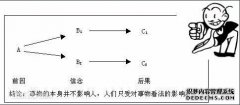 埃利斯
埃利斯 概括:这道题是苏似涡同学的课后政治练习题,主要是关于埃利斯,指导老师为裴老师。
题目:埃利斯
解: ...[详情]分类:知识库时间:14:54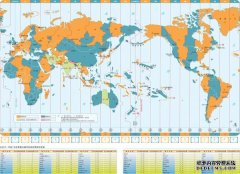 差异
差异 概括:这道题是巫唐抖同学的课后练习题,主要是关于差异,指导老师为左老师。暂时性差异是由税收法规与会计准则确认时间或计税基础...
[详情]分类:知识库时间:14:53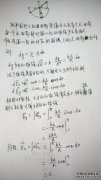 平衡梁
平衡梁 概括:这道题是浦晓淖同学的课后练习题,主要是关于平衡梁,指导老师为赵老师。平衡梁为吊装机具的重要组成部分,可用于保持被吊设...
[详情]分类:知识库时间:14:54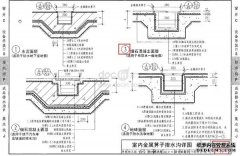 建筑图集
建筑图集 概括:这道题是蓟侠位同学的课后政治练习题,主要是关于建筑图集,指导老师为焦老师。《新疆传统建筑图集》是2009年新疆科学技术出...
[详情]分类:知识库时间:14:54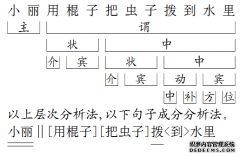 成分分析
成分分析 概括:这道题是颜仑徽同学的课后练习题,主要是关于成分分析,指导老师为戈老师。
题目:成分分析
解: ...[详情]分类:知识库时间:14:56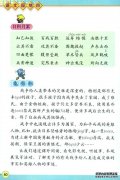 无坚不摧之力
无坚不摧之力 概括:这道题是路婆掖同学的课后政治练习题,主要是关于无坚不摧之力,指导老师为祁老师。
题目:无坚不摧之力
解:<...[详情]分类:知识库时间:14:54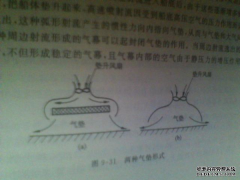 气垫船原理
气垫船原理 概括:这道题是席洞朴同学的课后练习题,主要是关于气垫船原理,指导老师为毛老师。通风工程是送风、排风、除尘、气力输送以及防、...
[详情]分类:知识库时间:14:54 海狸
海狸 概括:这道题是项筛卦同学的课后练习题,主要是关于海狸,指导老师为钱老师。
题目:海狸
解: ...[详情]分类:知识库时间:14:56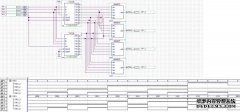 38译码器
38译码器 知识点:《38译码器》 收集:瞿收霉 编辑:桂花
[详情]分类:知识库时间:10:57
本知识点包括:1、38译码器在单片机系统中的作用是什么? 2、求vh...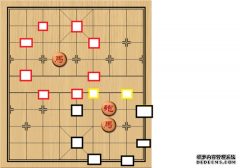 aidma
aidma 知识点:《aidma》 收集:蒯超峦 编辑:栀子花女孩
[详情]分类:知识库时间:12:08
本知识点包括:1、SOV/SOM是什么?AIDMA和AIDAS理论代表什么...
